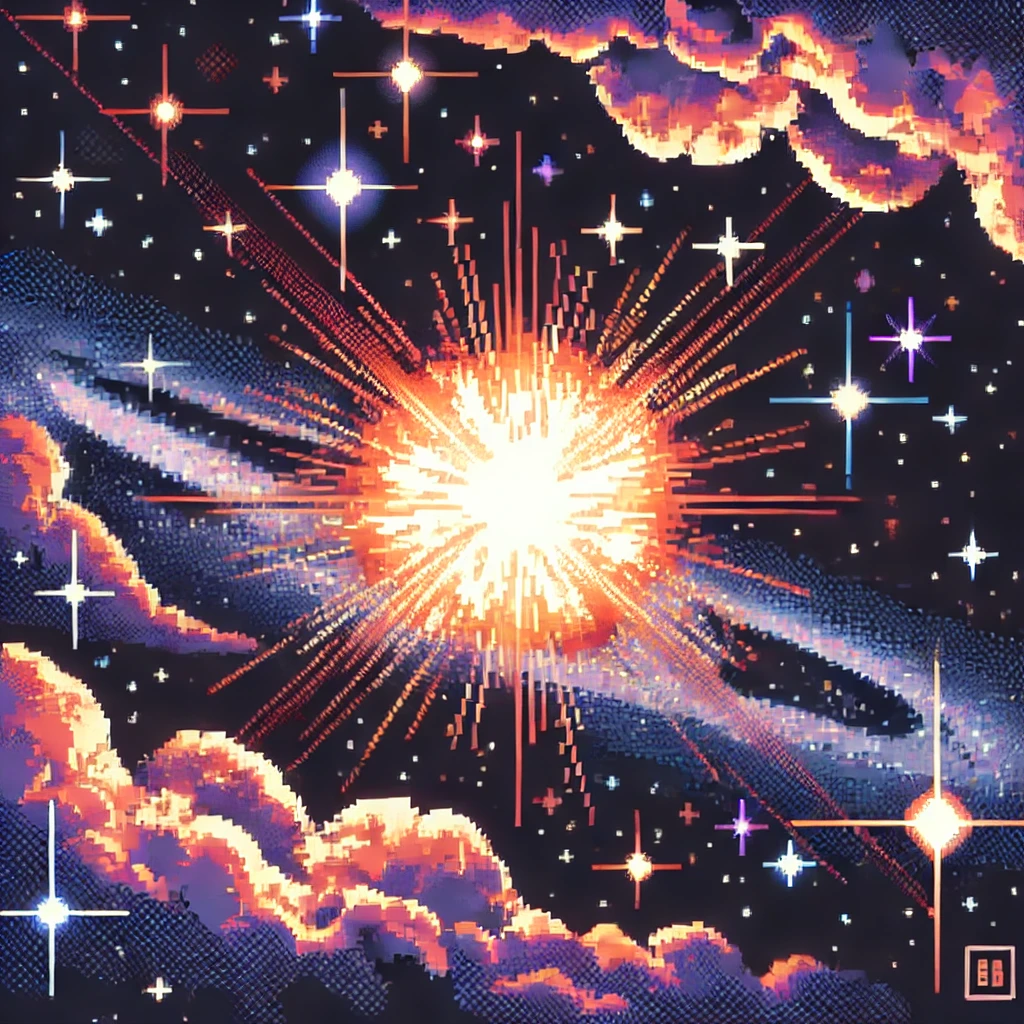The Evolution of a Star: From Nebula to Supernova

The life cycle of a star is a grand cosmic journey, spanning millions to billions of years. From its humble beginnings in a swirling cloud of gas and dust to its climactic end as a supernova or a compact remnant, the life of a star illuminates the processes that govern our universe. Understanding the evolution of a star provides insight into the forces that shape galaxies, forge elements, and sustain the cosmic balance.
Birth: From Nebula to Protostar
Stars are born in vast molecular clouds, or nebulae, which are made up of hydrogen, helium, and traces of heavier elements. These regions, often called stellar nurseries, are shaped by gravitational forces. Over time, small clumps of gas and dust within the nebula begin to collapse under their own gravity, forming dense regions called protostars.
As the protostar contracts, its core heats up due to the conversion of gravitational energy into thermal energy. This phase is marked by intense turbulence and magnetic activity, with the surrounding material often forming a spinning disk. Jets of gas may be ejected along the poles of the protostar, clearing away surrounding dust and heralding the birth of a new star.
Childhood and Adolescence: The Main Sequence
When the core temperature of a protostar reaches about 10 million degrees Celsius, nuclear fusion ignites. Hydrogen atoms fuse to form helium, releasing enormous amounts of energy. This marks the transition of a protostar into a main-sequence star—a phase that defines the majority of a star’s life.
During this stage, a delicate balance is maintained between the inward pull of gravity and the outward pressure from fusion-generated energy. The size, temperature, and luminosity of the star are determined by its initial mass. Smaller stars, like red dwarfs, burn their fuel slowly and can remain on the main sequence for tens of billions of years. Larger, more massive stars, such as blue giants, burn through their fuel rapidly, shining brightly but living shorter lives.
Adulthood: The Giant Phase
As the hydrogen in the core becomes depleted, a star begins to evolve. Without the outward pressure from hydrogen fusion to counteract gravity, the core contracts and heats up. This triggers the fusion of helium into heavier elements like carbon and oxygen. Meanwhile, the outer layers expand, and the star swells into a red giant or supergiant, depending on its mass.
For stars like our Sun, this phase includes the creation of stunning planetary nebulae, as the outer layers are gently shed into space. For more massive stars, however, the story takes a more dramatic turn, as their cores continue to fuse heavier and heavier elements.
The Climax: Supernova Explosion
In massive stars, the fusion process continues until iron is formed in the core. Iron cannot release energy through fusion, and as a result, the core becomes unstable. Gravity overwhelms the core, causing it to collapse in a fraction of a second. This implosion generates an immense shockwave that tears through the outer layers of the star, resulting in a supernova.
A supernova is one of the most energetic events in the universe, releasing more energy in a few seconds than the Sun will produce in its entire lifetime. The explosion scatters heavy elements like gold, uranium, and platinum into space, seeding the cosmos with the building blocks for planets, moons, and life itself.
The Aftermath: Neutron Stars and Black Holes
The remnants of a supernova depend on the mass of the original star’s core. Stars with moderate cores collapse into neutron stars—city-sized objects so dense that a teaspoon of their material would weigh billions of tons. Neutron stars often emit beams of radiation as they spin, becoming pulsars.
For the most massive stars, the core collapses into a black hole, an object with gravity so intense that not even light can escape. Black holes are mysterious and powerful, often influencing their surroundings by consuming nearby material or merging with other black holes.
Legacy: Star Formation and the Cosmic Cycle
Although a star’s life ends, its legacy endures. The elements forged within its core and ejected into space enrich the interstellar medium, fueling the birth of new stars and planets. This cosmic recycling ensures that the universe remains dynamic, evolving, and full of potential for new forms of existence.
Conclusion
The life cycle of a star is a testament to the grandeur and interconnectedness of the cosmos. From its origins in a nebula to its explosive finale as a supernova, a star’s journey is both a destructive and creative force. It shapes galaxies, generates the elements essential for life, and serves as a constant reminder of the immense scale and beauty of the universe. Through the study of stars, we uncover not only their secrets but also the story of our own existence, woven into the fabric of the cosmos.